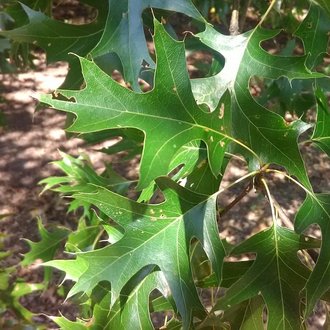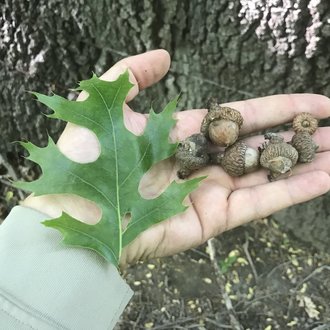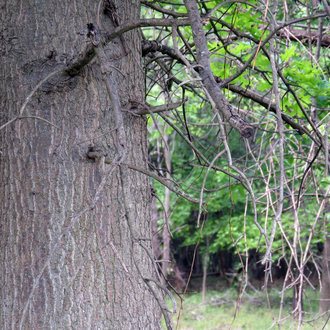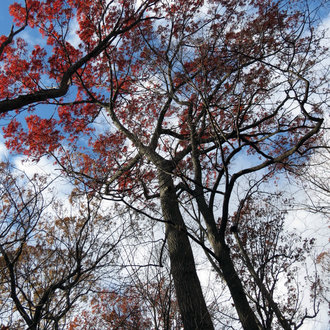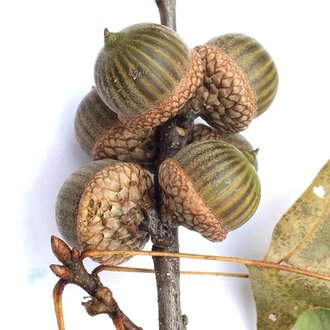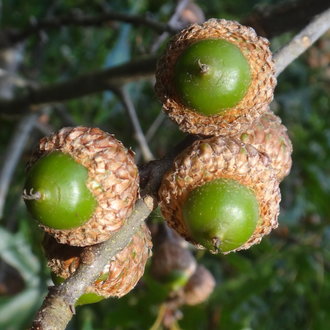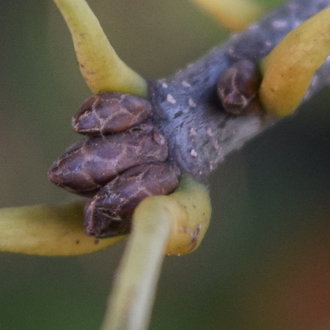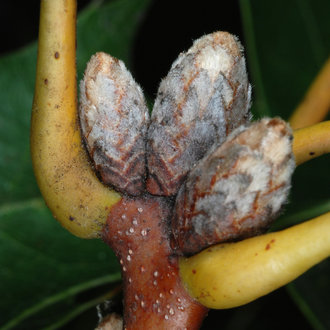Pin Oak vs Scarlet Oak
These oaks are frequently confused, especially when used as landscaping plants, as both have deeply-lobed leaves. In the wild, these species prefer almost opposite moisture conditions and rarely occur together. Pruning of landscaping plants can also make ID difficult by obscuring shape distinctions that are obvious on wild plants. Where present, they are easily distinguished by acorns, and with more effort, by pubescence on buds and leaf shape. Although both can be found in sunny, early-successional habitats, pin oak prefers wet, often poorly-drained conditions, whereas scarlet oak is typically found on dry sites with thin, rocky soil.
Pin Oak (Quercus palustris) | Scarlet Oak (Quercus coccinea) |
A fast-growing, short-lived red oak of poorly-drained sites, with a large, heavy central trunk and numerous small side branches. | A large, fast-growing, short-lived red oak of dry upland sites, named for the dark red color of its fall foliage. |
Sinuses between lobes more U-shaped, with lobes usually not closing the curve as far. Lobe tips often pointing close to the same direction within each lobe. 5-7 lobes, 10-30 bristles/awns on lobe tips. Photo © Claire Secrist, Public Domain. | Sinuses between lobes more C-shaped, with lobes usually closing or completing more of a circle. Lobe tips curve away from each other more within each lobe. 5-9 lobes, 18-50 bristles/awns on lobe tips. Photo © Michael Ellis, CC BY 4.0. |
Lower branches strongly descending, middle branches horizontal, upper branches ascending. Slow to self-prune. Numerous small lower branches remain on trees after dying, often for years. Photo © Katja Schulz, CC BY 4.0. | Self-prunes more readily, although it may retain larger dead branches. Trees in forests may have no branches until the canopy. When lower branches are present, not usually as strongly descending. Photo © Katja Schulz, CC BY 4.0. |
Acorns average smaller: 10-16 long and 9-15 mm wide, often look stout. Cap thin and saucer-shaped, only covers a small amount of the acorn. Photo © Ron Burkert, CC BY 4.0. | Acorns average larger: 12-22mm long and 10-21 mm wide, often longer than wide. Cup-shaped cap covers about half the acorn and can be quite thick. Acorns have one or more rings of fine pits at the apex. Photo © Chris Kratzer, CC BY-SA 4.0. |
Buds average slightly smaller (3-5mm), reddish brown, hairless or with only a few fine hairs at the tip. Not as sharply angular. Photo © , CC BY-SA 4.0. | Buds average slightly larger (4-7mm), variably pubescent, but usually pubescent at the tip and not at the base. Distinctly 5-angled in cross-section. Photo © Doug Goldman, CC BY 4.0. |
References & External Resources
These short lists show only links helpful for ID. For a complete list of references and resources also covering other aspects of ecology, visit the links section of the full article on each plant, which is the first entry here.



